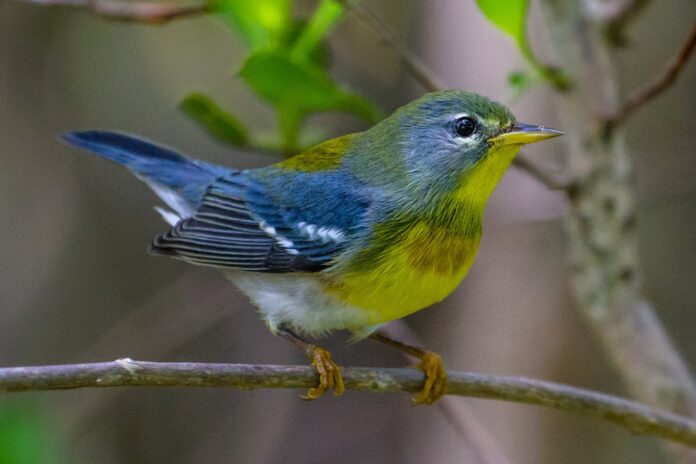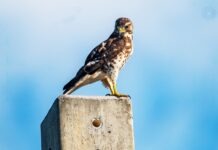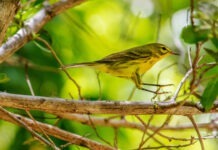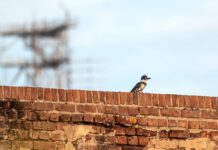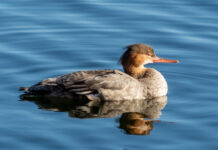I went out to the Key West Tropical Forest & Botanical Garden the other day with something of a mission – to write a column about the first bird I saw. Because sometimes you need to surprise yourself.
I first stopped by the pond, thinking I could put something together about a common gallinule, formerly the common moorhen, if I saw one. Because who doesn’t like a bird with a candy corn-patterned bill? But the only animate beings I saw were a half dozen turtles who swam over and slowly treaded water while looking disappointed in my lack of snacks. Though it’s possible that turtles always look disappointed.
It was almost 3 p.m., so it probably wasn’t the best time to find birds, but the morning had gotten away from me, as well as a good chunk of the afternoon.
Walking down the boardwalk a shadow passed over me, the kind of shadow that would be mystically foreboding, if you believed in that sort of thing, though really, it was just a turkey
vulture, flying low, which you can’t take personally. At least if you’re still ambulatory.
Vultures. Feh. Done them. I was going to have to write something about the second bird I saw.
In a thicket at the intersection of three paths I heard the softest of chip notes. So soft I wasn’t sure at first. I froze and listened. First there was the high ping of a golf club hitting a ball, then the distant muffled voices of people with opinions about how well the ball was hit. Then there was a jet taking off, then an ambulance passing. Then the chip note again.
I saw a shadow in the thicket and lifted my binoculars. A small, blurry moving shape, which got blurrier when I turned the knob the wrong way, then clearer when I turned it the right way. It disappeared and reappeared a few times, but I caught enough quick glances to know it was a northern parula.
I love northern parulas. I’m a sucker for their white bellies and yellow throats, which sometimes have dark necklaces of red feathers across them. And I’m a sucker for their white wing bars, their broken white eye rings, and their cool, slate blue everything else. But I never feel as if I have a deep understanding of them. A lot of times they seem like attractive strangers one passes on the street.
Northern parulas are members of the wood warbler family, known in scientific Latin as the Parulidae – which is the plural of parula, which is the diminutive of parus, which is the scientific
Latin name for the tit family, which is derived from the Icelandic word titlingur, which means
sparrow, even though neither tits nor warblers are sparrows. And though wood warblers are also not closely related to the tit family – they just kind of sort of look like some of them – parula translates to small tit, and Parulidae translates to small tits. That’s not snigger-worthy at all,
and frankly I’m a little disappointed in your reaction.
There is another parula in the Parulidae family, the tropical parula, but it used to be called Sennett’s warbler, which makes the northern parula, like Daenerys Targaryen, first of their
name, at least in the Parulidae family.
There are 120 members of the wood warbler family, 56 of which have made it north of the Mexican border, 49 of which regularly breed in the U.S. and Canada. Thirty-eight of those wood
warbler species have been recorded in the Florida Keys. (During migration I once managed to
see 24 warbler species in a single day.)
Most American and Canadian birders tend to just call them warblers. To keep things confusing though, not all wood warblers have warbler in their common name, and not all birds with warbler in their common name are wood warblers.
Warblers are on the diminutive side of the bird-size spectrum, most 6 inches or less from bill tip to tail tip, most weighing about a third of an ounce, which is the equivalent of two-and-a-half Wint-O-Green Life Savers, three Sour Patch Kids, one Goldenberg’s Peanut Chew, or one black
Sharpie pen. (You choose.)
Northern parulas, which my spell check is relentlessly trying to change to Northern Paula’s, are on the diminutive end of the diminutive spectrum – 4.5 inches long and .3 ounces.
When you flip through the warbler section in a field guide, it seems like a lot of variations on a theme, an armada of similarly sized and shaped birds with dozens of different paint jobs.
It keeps you on your toes, but also makes it hard to think of them as individual species, or even individual birds, when you’re sorting through this vast array of possibilities. And once you
kind of figure them out, you can feel a little exhausted.
All this is complicated exponentially by the fact that warblers really don’t sit still. They flit constantly from branch to branch, going deep into the foliage, then popping out again, mostly
allowing only partial glimpses of them. (One ornithologist tracked a northern parula through 130 flights and calculated that it flew to another branch every 18.1 seconds, with the flights lasting an average of .64 seconds. This did not including hopping and walking on the same branch.)
When I used to guide, I would occasionally have a client who would see a warbler and ask, “What’s that?” I’d say, “Prairie warbler,” and they’d nod. Three minutes later, they’d say, “What
that?” Prairie warbler. Five minutes later, they’d ask, “What’s that?” again, and it would inevitably be a prairie warbler.
I would try to sound good-natured about it, but I would start to get a little frustrated with them. Then I would get frustrated with myself for getting frustrated with them, because it takes time and repetition to learn that stuff, and I was lucky enough to have a little facility for telling all those tiny birds apart, and there were birders I knew who had far broader and deeper facilities
than I had, so who was I to get shitty?
So yeah, northern parulas. I have no idea what to say about them.















